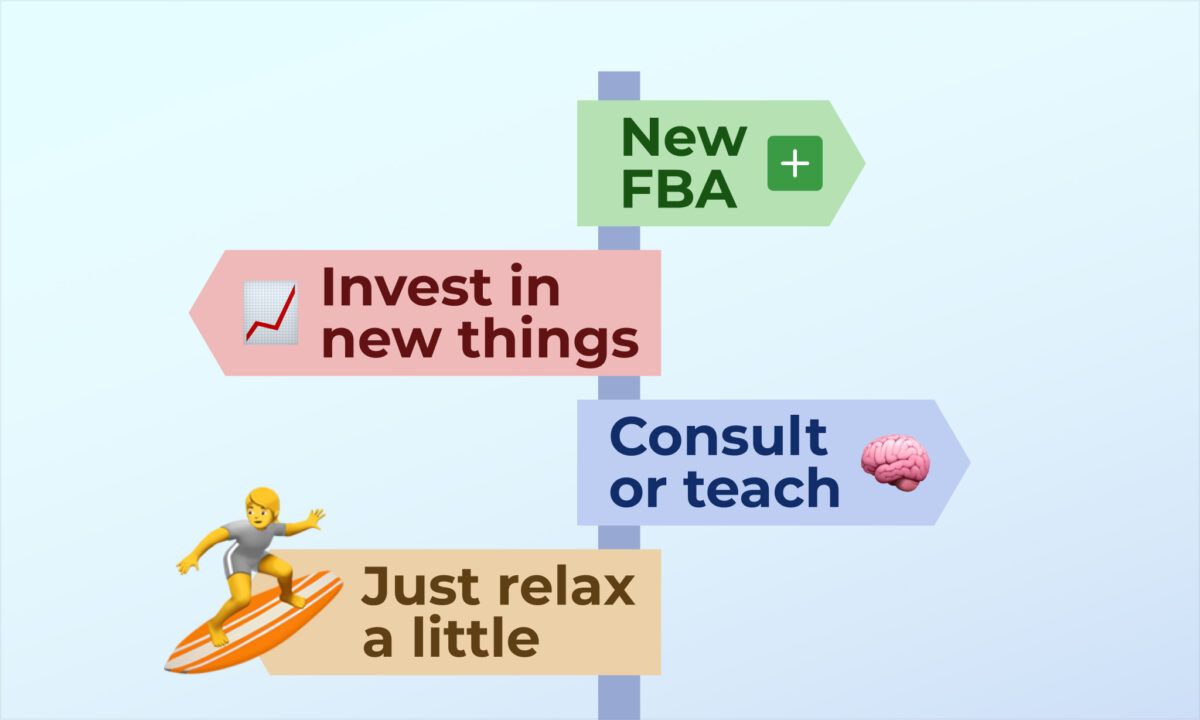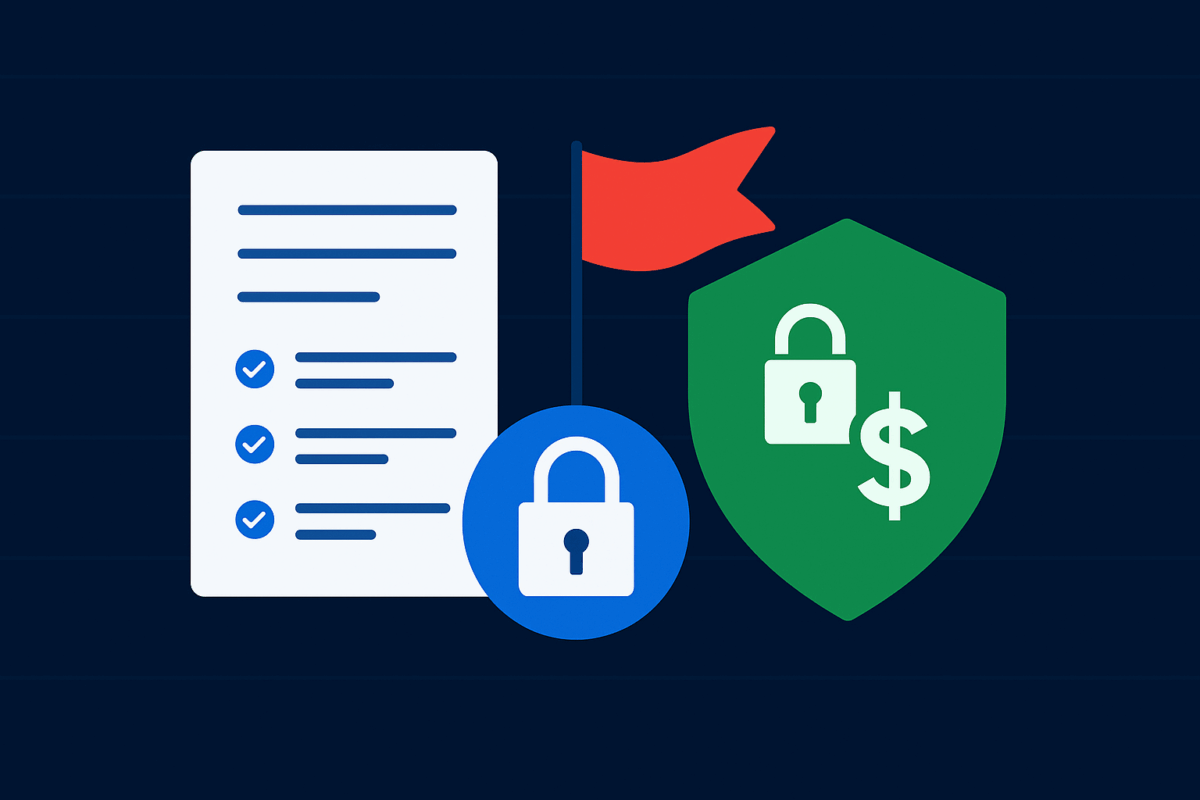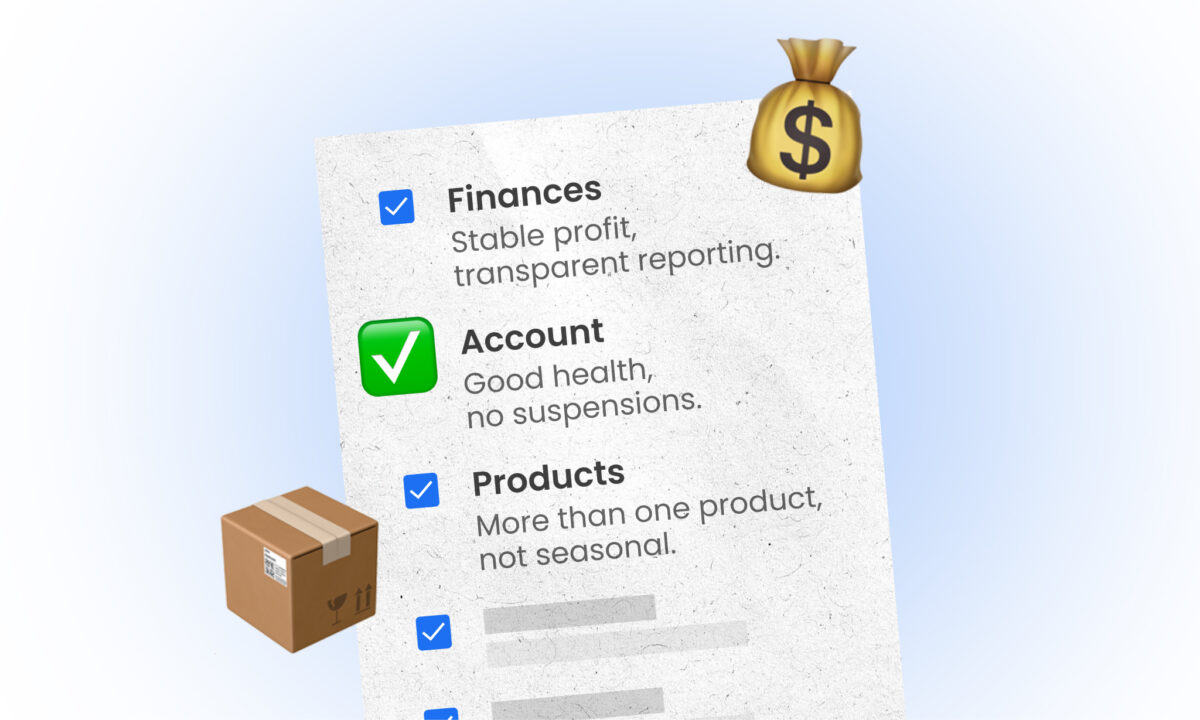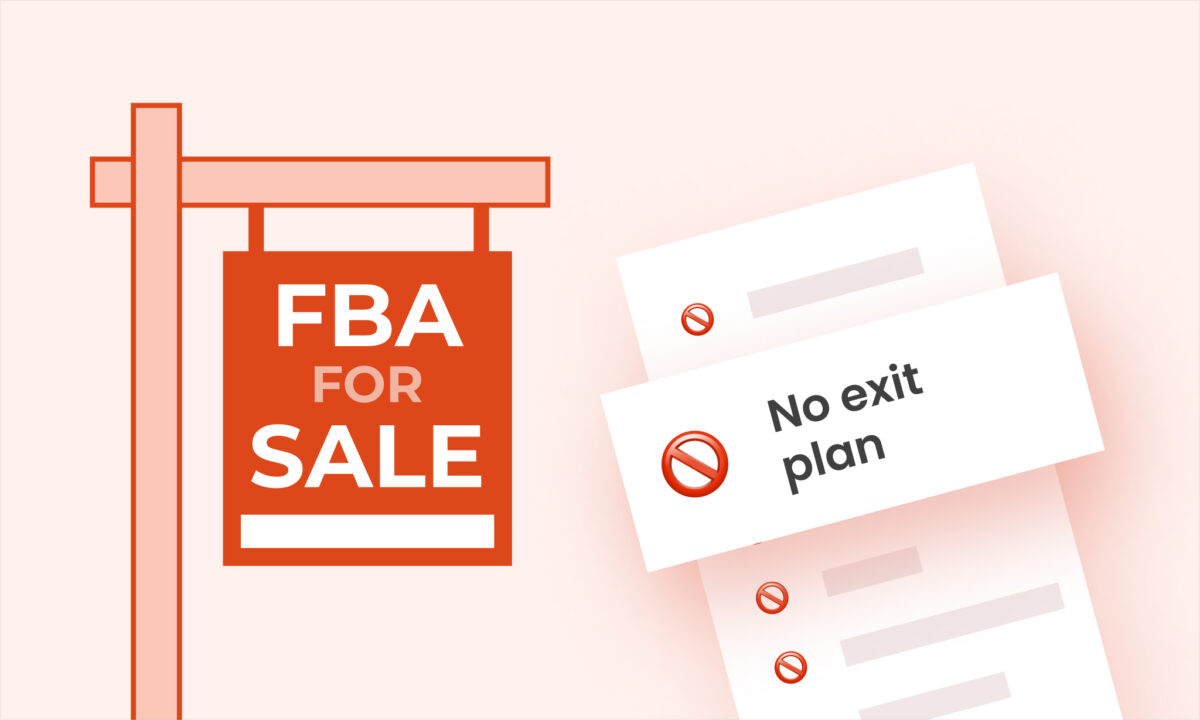Selling your Amazon FBA business for the first time can be both exciting and overwhelming – especially when you reach the due diligence stage. Due diligence is the buyer’s thorough inspection of your business before closing the deal. For sellers, it’s critical to know what’s coming and how to prepare. This guide breaks down the due diligence process from a seller’s perspective in a practical, tactical way. We’ll outline what to expect, what documentation to gather, how long the process typically takes, what buyers focus on, and how to avoid common pitfalls. With the right preparation, you can streamline due diligence and move toward a successful sale with confidence.
1. What Is Due Diligence and Why It Matters for Sellers
Due diligence is essentially a business audit conducted by the buyer after you’ve accepted an offer (often after signing a Letter of Intent). During this phase, the buyer verifies every important detail of your Amazon FBA business – financials, operations, account health, supply chain, product performance, and more – to ensure everything is as advertised. From the seller’s perspective, due diligence is your final exam before the sale. A smooth due diligence process builds the buyer’s trust and keeps the deal on track. If issues or discrepancies surface now, it can lead to price renegotiations or even a lost deal. In short, due diligence matters because it’s the last hurdle to clear on your way to a successful exit. By understanding this process and preparing in advance, you’ll reduce stress and set yourself up for a swift, hiccup-free closing.
2. What to Expect During the Due Diligence Process
Expect a deep dive into every aspect of your business. Once an offer is in place, the buyer will typically provide a due diligence checklist or a list of requests. They’ll comb through your financial statements, analyze your Amazon Seller Central reports, review product listings and reviews, inspect your supplier arrangements, and evaluate your overall account health. Be prepared for detailed questions and requests for proof. It’s normal for buyers to ask for things like verification of your revenue and profit (e.g. comparing your P&L statements to Amazon payout reports or bank statements), explanations of any anomalies (such as a sudden sales dip or spike), and details about daily operations.
During due diligence, communication is key. Buyers may reach out frequently via email or calls with follow-up questions. Aim to respond promptly and thoroughly – slow or incomplete answers can raise red flags. It’s also common to schedule live walkthroughs or screen-shares of your Seller Central account so the buyer can verify data in real time. Don’t be alarmed; this level of scrutiny is standard. Keep in mind that the buyer isn’t trying to interrogate you – they’re validating the investment. Maintaining a cooperative and transparent approach will help build the buyer’s confidence.
Confidentiality is usually maintained throughout this phase. By the time due diligence starts, you should have a non-disclosure agreement (NDA) in place, protecting your sensitive information. You can share reports and documents knowing they won’t be disclosed elsewhere. If you’re using a broker or a marketplace platform, they may offer a secure way to share data (for example, a virtual data room or view-only account access). Take advantage of these tools to keep the process professional and secure.
Overall, expect the due diligence process to be intensive but manageable. Anticipate spending time each day to gather documents, answer questions, and possibly meet with the buyer to clarify details. If you go in expecting a thorough vetting (and not a quick, superficial look), you’ll be mentally prepared to handle it with patience and diligence.
3. Documentation and Information You Should Prepare
One of the best ways to ensure a smooth due diligence is to prepare your documentation in advance. Having organized records ready to go will save you time and impress buyers with your professionalism. Here’s a checklist of key documents and information first-time sellers should gather:
- Financial Records (12–24+ months): Prepare profit and loss (P&L) statements, balance sheets (if available), and cash flow statements for the past one to two years. Include your tax returns for the business and any official accounting records. Buyers will use these to verify your revenue, expenses, and profits. Make sure your financials clearly show Amazon fees, advertising costs, cost of goods sold, and any owner-specific expenses (with notes on any one-time or “add-back” expenses). The cleaner and more detailed your financial records, the easier it is for the buyer to trust your numbers.
- Amazon Seller Central Reports: Download and organize reports from your Seller Central account. Key reports include your business reports (showing sales volume, units sold, etc. by month), advertising reports (PPC performance, Advertising Cost of Sales), and inventory reports. If possible, provide a trailers (transaction report) to reconcile your financials with Amazon disbursements. These reports allow the buyer to cross-check your stated sales and verify the consistency of your store’s performance.
- Account Health and Performance Metrics: Prepare evidence that your Amazon account is in good standing. This can include a screenshot or PDF of your Account Health dashboard (showing metrics like Order Defect Rate, Late Shipment Rate, policy compliance, etc.), plus a summary of your seller feedback ratings and product review averages. If you’ve had any policy violations or account warnings in the past, be ready to explain them and show that they were resolved. A healthy account with positive metrics reassures buyers that they won’t inherit a risky or suspended account.
- Product Performance Data: Create a list of your products (SKUs) with their key performance indicators. Include each product’s annual or monthly sales, best seller rank (BSR) trends, review count and average rating, return rate, and percentage of total revenue. Buyers will examine whether your revenue is concentrated in a single product or spread across a portfolio. Highlight any seasonality or growth trends. If one SKU is, say, 60% of your revenue, expect to discuss the stability and plans for that product. Having this data compiled in one place demonstrates transparency about your product lineup.
- Supplier and Inventory Documentation: Gather your supplier agreements, invoices, and purchase orders. Buyers will want to verify your cost of goods sold and ensure that supplier relationships are stable. Provide contact info for your key suppliers and note how long you’ve worked with them. If you have written contracts or exclusivity agreements with suppliers, those are important to share. It’s also helpful to provide an inventory report or stock count, including where inventory is held (Amazon FBA warehouses, 3PL, etc.) and the inventory value. A clear picture of your supply chain and inventory levels helps the buyer confirm there won’t be surprises (like supply disruptions or hidden debts to suppliers).
- Standard Operating Procedures (SOPs): If you have documented processes for running the business, prepare those to share. This might include SOPs for ordering inventory, customer service scripts, listing optimization practices, or any automation tools you use. While not every buyer will ask for your SOP documents during due diligence, having them ready is a plus. It shows that your business is well-organized and easy to transfer, easing the buyer’s concerns about taking over operations.
- Legal and Miscellaneous Documents: Finally, compile any other relevant documents: proof of brand assets such as trademarks or patents, your Amazon Brand Registry documentation (if you have a private label brand), any contracts or leases (for example, if you rent warehouse space or have agreements with a 3PL or VA), and any noteworthy legal correspondence (like insurance policies or any past legal issues that have been resolved). Essentially, anything that a new owner would need to continue running the business should be identified and ready to share. The goal is to leave no important document hiding in a drawer – get everything organized now.
By preparing this documentation ahead of time, you’ll be able to answer buyer requests in minutes, not days. That speed and organization can dramatically shorten the due diligence timeline and make you look professional and trustworthy. Create a secure folder (e.g. a Google Drive or Dropbox) with these files, labeled clearly. When due diligence starts, you can simply grant access or send the folder to the buyer (after confirming NDA protections). This proactive approach sets a positive tone and can help maintain momentum toward closing.
4. How Long Does the Due Diligence Process Take?
For first-time sellers, one of the big questions is how long you’ll be “stuck” in due diligence. The answer: it depends, but typically a due diligence period lasts about 2 to 4 weeks after you accept an offer. In many cases, buyers and sellers agree to around 14–30 days for due diligence in the Letter of Intent. Several factors can influence this timeline:
- Size and Complexity of the Business: A larger business with multiple product lines, marketplaces, or a complex supply chain might require more time to review than a simple one-product FBA store. Bigger deals often lean toward the longer end (3-4 weeks), whereas smaller, straightforward businesses can sometimes be vetted in a week or two.
- Preparation and Responsiveness: The more organized you are, the faster due diligence can go. If you have all documents ready and respond to inquiries within hours, a motivated buyer could complete their review quickly. We’ve seen instances where a very prepared seller and experienced buyer wrapped up due diligence in under a week. On the flip side, if a seller needs several days to dig up documents or hesitates on providing information, the process will drag on (and could even spook the buyer). Tip: Set aside dedicated time during due diligence to focus on buyer requests so you can keep up the momentum.
- Buyer’s Thoroughness: First-time buyers might take a bit longer as they learn what to look for, whereas seasoned buyers or aggregators may have a streamlined checklist and due diligence team to move faster. Some buyers will use third-party due diligence services or tools, which might compress the timeline as well.
In general, expect roughly two weeks of active document exchange and Q&A, and plan for up to a month just in case. It’s wise not to rush the buyer – you want them to feel fully comfortable by the end of it. As long as you’re responsive and everything checks out, this phase will conclude on schedule. Remember, due diligence isn’t indefinite: if both parties are serious and organized, it should have a clear end date per your agreement. Stay communicative with the buyer and your broker (if you have one) about timeline expectations. If the buyer requests an extension, evaluate the reason (they might need a few extra days for a CPA to review financials, for example), but also be cautious of unnecessary delays. Generally, a smooth due diligence process should wrap up in a matter of weeks, not months.
5. What Buyers Focus On During Due Diligence
It helps to put yourself in the buyer’s shoes. What are they really looking for? In due diligence, buyers are typically trying to answer one fundamental question: “Am I getting what I think I’m paying for?” Here are the key areas buyers usually examine, and what you as a seller should ensure look solid:
- Financial Consistency: Buyers will scrutinize your sales and profit trends. They want to see that your revenue and net profit are stable, or better yet, growing. Expect them to verify every number – reconciling your P&Ls with Amazon’s reports, checking for seasonality, and confirming your profit margins after all expenses. Consistent month-over-month and year-over-year performance is a big green flag. If there were any dips (e.g. stockouts or a one-time expense), provide a clear explanation. Buyers are also on alert for any signs of “window dressing,” like sudden spikes in sales due to heavy discounts or anomalies that might indicate manipulation. Keep your financial story honest and logical.
- Amazon Account Health: The buyer needs confidence that they’re inheriting a clean, compliant Amazon account. They will look at your account health metrics and selling history. Any history of suspensions, policy violations, or negative seller feedback will be closely evaluated. A strong track record – good customer feedback, low order defect rates, no outstanding warnings – tells buyers the business is well-managed and less likely to face Amazon’s dreaded enforcement actions. If your account has a few blemishes (it happens), show what actions you took to fix them and that there have been no recurrences. Basically, buyers want to avoid stepping into a situation where the account could be at risk. Demonstrating solid account health and compliance goes a long way.
- Supplier Reliability and Supply Chain: Because Amazon FBA businesses rely on physical products, buyers will examine how those products get made and delivered. They’re looking for secure and steady supply chains. This means checking that you have reliable suppliers (ideally with backup options), reasonable production lead times, and manageable shipping logistics. If your business depends on one overseas manufacturer, a buyer will assess the risk and whether that relationship is on good terms. They might review your supplier contracts or ask about any supply disruptions you’ve had. Make sure to highlight positives here: long-term supplier relationships, diversified suppliers, or stable costs. Also, inventory management is part of this equation – buyers will see if you consistently avoid stockouts and excess storage fees. A well-oiled supply chain gives buyers confidence that they can keep the business running smoothly post-acquisition.
- Product Performance and Market Position: Buyers will deep-dive into your product catalog’s performance to ensure the products are viable long-term. They will look at your bestsellers and see if your revenue is diversified or heavily reliant on one hero product. Too much reliance on a single SKU can be seen as a risk (what if that product’s sales decline?). They’ll also check product reviews and ratings for quality signals – lots of positive reviews and a strong rating indicate customer satisfaction and a durable product line. Additionally, buyers will assess your niche and competition: Is the market for your products growing? Do you have a strong brand presence or any moat (like patents or a unique brand story) that fends off competitors? From your side, be ready to provide data on each product’s sales history, review status, and any launches or campaigns you’ve done to boost performance. If some products are newer or have untapped potential, mention that too – buyers love to see growth opportunities (though that’s more of a valuation factor, it’s still something they “look for” qualitatively during due diligence).
In summary, buyers are verifying past and present stability as well as future risk. Financial health, account health, supply stability, and product strength are at the top of their due diligence checklist. Knowing this, you can double-check these areas yourself before due diligence begins. If you identify any weak spots (for example, a product with declining sales or a supplier that’s been problematic), you can prepare an explanation or even take action to mitigate the issue before the buyer ever asks. Being one step ahead shows sophistication and will make discussions during due diligence much more straightforward.
6. Common Mistakes Sellers Should Avoid During Due Diligence
First-time sellers often stumble in due diligence by not anticipating what the process entails. Here are some common mistakes to avoid, so you don’t inadvertently derail your deal:
- Being Disorganized or Unprepared: Perhaps the number one mistake is scrambling to find documents or cleaning up books after due diligence starts. If a buyer senses that your financials or operations are in disarray, their confidence drops. Avoid this by organizing your records before you list the business (refer back to the documentation checklist above). An organized seller sends a message: this business is well-run. On the flip side, if you deliver sloppy or incomplete records, buyers may wonder what else has been neglected.
- Lack of Transparency or Hiding Information: Some sellers panic when a flaw in the business comes up and think, “Maybe I just won’t mention it.” This is a huge mistake. Whether it’s a product with falling sales, a pending Amazon policy warning, or a supplier issue, do not hide it. Buyers have a knack for uncovering inconsistencies – and due diligence is specifically designed to find them. If you’re caught concealing something, the deal will likely fall apart (and could damage your reputation). Always be upfront. It’s far better to proactively disclose known issues with context and solutions (e.g. “Product X had a dip in Q2 due to stockout, but we’ve since overhauled our inventory planning and recovered in Q3”) than for the buyer to discover it on their own without explanation. Transparency builds trust, even about negatives.
- Providing Inaccurate or Inconsistent Data: Double-check every piece of information you share. A common pitfall is giving the buyer numbers that don’t reconcile (e.g. your P&L shows $500k revenue for the year but Amazon reports show $450k). Even if it’s an innocent mistake or timing difference, discrepancies wave a red flag. Ensure that your financial statements, Amazon reports, bank statements, and tax filings all line up logically. If there are differences (like accrual vs cash accounting timing issues), explain them clearly. Inaccurate data can not only slow down due diligence (as you scramble to correct things) but also make the buyer question your professionalism.
- Slow or Poor Communication: Time kills deals. If a buyer sends you a question or request and you take a week to reply, you introduce doubt. They might start wondering if you’re stalling on purpose or if you’re just not serious. Avoid this by staying on top of communications – even if you don’t have a complete answer yet, acknowledge the question and provide a timeline or partial info. Also, keep communication professional and emotion-free. It’s easy to get defensive if a buyer questions something about your “baby” (business), but remember the buyer’s intent is to verify, not insult. Stay calm and factual in your responses. A cooperative attitude can smooth over potential bumps.
- Making Unusual Business Changes Mid-Process: Once you’re in due diligence, try to keep your business as stable as possible. Drastic changes can alarm a buyer. For example, suddenly running a huge discount campaign that spikes sales might confuse the financial analysis (and look like you’re artificially boosting numbers). On the flip side, neglecting the business is also a mistake – don’t run out of stock or let your ad campaigns lapse during due diligence because you’re “busy with the sale.” Keep operating as normal. If any significant change or issue does occur (say, Amazon announces a new fee or a competitor enters), inform the buyer proactively with your take on the impact. Surprises are the enemy of deals; consistency is your friend.
- Ignoring Legal and Transfer Details: Another mistake is not thinking through the transferability of your business early on. Ensure you’ve addressed things like trademark issues, licensing, or any contractual obligations. For instance, if you claimed your product is patented but it’s actually patent-pending, clarify it. Or if you use software tools that aren’t transferable, let the buyer know what the alternatives are. During due diligence, buyers will be checking that they can legally take over all assets of the business without headaches. If you haven’t resolved an outstanding legal question or a consent needed (maybe a supplier contract needs supplier approval to transfer, etc.), it can delay or derail the deal. Work on these potential snags ahead of time.
By avoiding these pitfalls, you greatly increase the chances of sailing through due diligence. In essence, be honest, be organized, and be responsive. Treat due diligence as a collaboration where both sides want a successful outcome. Your goal is to show the buyer that nothing is hiding in the shadows and that taking over your business will be a sound investment for them.
7. Actionable Steps to Streamline Due Diligence Before You List
The best time to prepare for due diligence is before you even list your Amazon FBA business for sale. Taking some strategic steps upfront can save you a ton of time (and stress) later. Here are some tactical moves to make pre-listing that will set you up for a smooth due diligence phase:
- Conduct a Self-Audit of Your Business: Pretend you’re the buyer and critically examine your own business. Go through a due diligence checklist (financials, products, traffic, suppliers, etc.) and see if you would be satisfied. Identify any weak spots. Is your bookkeeping up to date and accurate? Are there any unexplained dips in sales you need to analyze? Is every expense category in your P&L justified? By catching and fixing issues now, you’ll prevent last-minute surprises. Some sellers even hire an accountant or due diligence consultant to review their business pre-sale – an option to consider if you want an expert’s eye on potential problem areas.
- Organize Your Documents and Data Early: Don’t wait until a buyer is on the hook to scramble for documents. As soon as you decide to sell, start compiling all the documents we listed in the section above (financials, reports, agreements, etc.). Create a well-structured folder system for all your files. For digital data like Amazon reports, have them exported and saved. If you use any specialized software (inventory management, analytics tools), generate summary reports. Essentially, build your data room in advance. Not only will this make due diligence faster, it also allows you to spot any missing pieces while you still have time to retrieve them.
- Tighten Up Your Amazon Account Health: In the months leading up to your sale, be hyper-vigilant with your Amazon account. Resolve any policy warnings or performance notifications immediately. If there are any lingering customer service issues or negative reviews you can address, do so. Ensure your seller metrics (late shipment rate, cancellation rate, etc.) are in excellent shape. This might mean temporarily erring on the side of caution – for example, avoid risky tactics that could trigger Amazon’s ire and don’t launch any products that might have compliance questions right before a sale. A squeaky clean account over the last 6-12 months is a huge selling point and eases buyer anxiety during due diligence.
- Secure and Document Your Supply Chain: Before listing, talk to your suppliers. Let them know you’re considering a sale (you don’t have to reveal details, just gauge their support). Try to secure favorable terms that a new owner could continue – for instance, ensure your pricing won’t suddenly increase for the buyer or that you can transfer any supply agreements. Document key supplier contacts and any processes they need to follow (e.g. how to place orders, typical lead times). If you have secondary suppliers or backups, note those as well. By demonstrating that the supply chain is solid and well-documented, you remove a lot of buyer concern upfront. If there are any potential supply issues on the horizon (like a factory moving or raw material cost rising), come up with a mitigation plan now so you can discuss it confidently if asked.
- Prepare Answers to Common Buyer Questions: First-time sellers can be caught off guard by detailed questions. You can avoid this by preparing a brief “FAQ” or summary about your business for prospective buyers. This might include: your reason for selling, a rundown of daily operations (how many hours you work, tasks you handle vs. outsource), details on any anomalies in financials (e.g. “We invested $20k in a new product launch in June, which affected that month’s profit”), and clarifications on add-backs or adjustments in your financials. Think about the questions you would ask if you were buying your business. Having clear, written explanations or talking points ready means you’ll answer consistently and confidently when the time comes. It also shows buyers that you’ve done your homework and builds trust in your professionalism.
- Work with Experienced Professionals (if applicable): Consider enlisting a broker or advisor who specializes in Amazon businesses, or at least consult with fellow sellers who have sold businesses before. They can provide insight into the due diligence process and even help review your materials. If you’re selling via a marketplace like exit.io, familiarize yourself with their selling process and any tools they provide for due diligence. Some platforms offer templates or guidance on what documents to prepare. Leverage those resources. Even though you ultimately have to do the legwork as the seller, you don’t have to reinvent the wheel – use checklists and advice from those who have gone through it.
By taking these steps before you even get a buyer at the table, you essentially streamline the entire sale. When it’s time to list your business, you’ll already have a professional information package ready. Buyers will notice this. A well-prepared seller often attracts more and better offers, because buyers feel more confident from the get-go. Plus, you’ll reduce the back-and-forth during due diligence, making the experience faster and more pleasant for everyone involved. In the high-stakes world of business sales, an ounce of preparation is truly worth a pound of cure.
Final Thoughts
Due diligence may sound intimidating to first-time Amazon FBA sellers, but with the right mindset and preparation, it can be a manageable and even enlightening process. Remember that buyers aren’t trying to catch you out for sport – they simply want to be sure of what they’re buying. By being organized, transparent, and proactive, you make their job easier and increase your own chances of a successful sale. Think of due diligence as a collaborative verification step: you and the buyer are working together to confirm that your business is solid and ready for a new owner.
For you as a seller, being prepared not only speeds up the deal, it also signals to the buyer that this is a well-run operation. That confidence can protect your valuation and smooth out negotiations. So take the time to get your house in order before due diligence begins, avoid common missteps during the process, and maintain open communication with your buyer. Many sellers have navigated this stage successfully – you can too. With the tips in this guide, you’re well on your way to handling due diligence like a pro and moving one step closer to a lucrative exit.
exit.io is a platform that connects buyers and sellers of Amazon businesses. This article is for informational purposes only and does not constitute financial or business advice.








